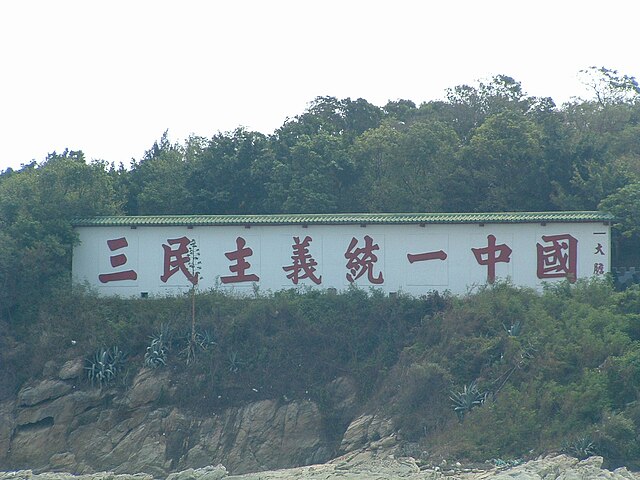Five Races Under One Union
Five Races Under One Union was one of the major principles upon which the Republic of China was founded following the 1911 Revolution. Its central tenet was the harmonious existence under one nation of what were considered the five major ethnic groups in China: the Han, the Manchu, the Mongols, the Hui (Muslims), and the Tibetans.
The center flag is the Five-Colored Flag of the Republic of China. Underneath the three flags is the message: "Long live the union" (共和萬歲).
Painting of the Qing army facing the Panthay Rebellion in Yunnan. The Qing military used a five-color flag.
The Nanjing Road following the Shanghai Uprising, with the Five Races Under One Union flags used by the revolutionaries on display
Three Principles of the People
The Three Principles of the People is a political philosophy developed by Sun Yat-sen as part of a philosophy to improve China made during the Republican Era. The three principles are often translated into and summarized as nationalism, democracy, and the livelihood of the people. This philosophy has been claimed as the cornerstone of the nation's policy as carried by the Kuomintang; the principles also appear in the first line of the national anthem of the Republic of China.
Sun Yat-sen, who developed the Three Principles of the People
"Portrait of Sun Yat-sen" (1921) Li Tiefu Oil on Canvas 93×71.7cm
A sign on Dadan Island near Quemoy (Kinmen) facing Mainland China proclaiming "A Unified China Under Tridemism" set by General Zhao in Aug. 1986, dismissed after 1987 Lieyu Massacre






